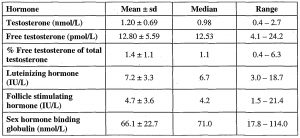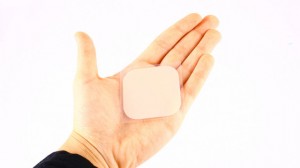
How do you measure your testosterone level?
An important point to start with is that there has not yet been a relationship established between sexual dysfunction in women and a specific level of testosterone. There hasn’t yet been established a level of testosterone below which women are to be termed deficient which means that there isn’t a level to be restored to in order to say that a woman is replete. So the reason why you might need to measure your testosterone is because you are showing a possible symptom of low testosterone, which is sexual dysfunction, and you want to make sure that testosterone therapy might not result in excess.
It is not a straightforward task to measure testosterone in women. Going to a laboratory will mean that you are very likely to find yourself being measured using assays that were set up for measuring testosterone in men. If a woman has a condition of androgen excess then assays set up to measure for men can be useful in measuring the extent of elevated testosterone. But these assays tend to lack the specificity and sensitivity to be able to accurately measure lower values found in women with normal testosterone or low testosterone.
Measuring testosterone is not as simple as measuring your total testosterone. 66% of Testosterone circulates in women bound to SHBG (Sex hormone binding globulin), 33% is bound to Albumin and 1% is free in the blood. The most reliable indicators of testosterone levels are believed to be the bioavailable measures which are non-SHBG-bound or free.
To measure free testosterone accurately your best bet is equilibrium analysis. Some testosterone is placed within a chamber and then it is dialysed across a membrane which will block the transfer of SHBG and Albumin. Then it is possible to calculate the free testosterone dialused across the membrane. This method relies on total testosterone being measured first and also how much the hormone is diluted. It is also expensive and rather labour intensive which is why it is rarely used for clinical practice.
Non-SHBG bound testosterone will tend to correlate with free testosterone and is measurable using the ammonium sulfate precipitation technique. This method will work out how much of the total testosterone is made up of non-SHBG-bound testosterone and this concentration multiplies the percentage in order to find the bioavailable testosterone concentration.
The Sodergard equation can be used for calculating free testosterone as long as we know the figures for total testosterone, albumin and SHBG. Analogue assays are widely available but very unreliable especially for low testosterone in women. Salivary testosterone has also been used for when women have hyperandrogenism. But the normal range is large and shouldn’t be equated to free testosterone levels.
Testosterone levels are higher in the morning so blood should be drawn then.







